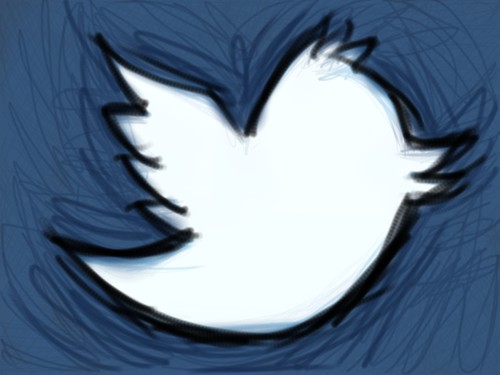
Credit to Glen Gilmore (@SocialMediaLaw1) for bringing this story to my attention.
Last month Twitter released the data from its semi-annual transparency report. The report details such things as account holder information requests from the government, the number of content removal requests and copyright takedown notices. Importantly all three categories were significantly up in the first half of 2013.
Copyright Takedowns Notices
By far the biggest proportion of requests concerned copyright takedowns. Copyright takedown requests provide rights holders a mechanism to attempt to prevent the unauthorised use of their material. The legal tool is found under US law in Section 512 of the Digital Millennium Copyright Act (“DMCA”) (collectively referred to as OCILLA (Online Copyright Infringement Liability Limitation Act). It provides rights holders a procedure to highlight to Internet service providers (ISPs) – known as online service providers (OSPs) in the US – that their site network contains infringing material. This does not mean that the ISP is liable although liability can arise in certain circumstances (e.g. omission to act to remove the material).
To provide some background on the copyright law it may be worthwhile to look at the DMCA. Section 512 provides that there is no liability for an ISP where it follows certain conditions laid down in the legislation. As long as an ISP complies with the legislation they are granted the benefit of what is known as a safe-harbour and they are not liable. The safe-harbour provisions echo those of the E-Commerce Directive detailed in Articles 12-14. To obtain the protection of the safe-harbour under the DMCA an ISP must not have actual knowledge of the infringing activity or be aware of circumstances from which infringing activity is apparent. Further, upon obtaining knowledge or awareness the ISP must act expeditiously to remove the work. There is of course a counter procedure to allow the perceived infringer to have the material restored (section 512(g)(3)). To prevent speculative or vexatious takedown requests there is a detailed procedure to which a holder must follow in order to submit a request (section 512(c)(3)).
Copyright Takedowns on the Rise
For the period between January 1st and June 30th 2013 the number of copyright takedowns on Twitter surged by 76 percent on the previous 6 months to 5,753. These takedown notices were submitted under the auspices of the DMCA. Whilst there is limited detail on the intricacies of the specific requests they are likely to have concerned photos, songs, videos and text excerpts. We are told that it affected 22,399 different user accounts. Whilst there have a huge number of takedown requests Twitter also made it clear that it did not honour a significant number of requests. This could either be because the notices failed to provide sufficient information on the material on Twitter or because there was a misfiled non-copyright complaint.
To be precise, 61% of takedown requests resulted in the removal of material. In real terms that means in the last 6 months Twitter removed 18,413 tweets and 3,993 pieces of media on the basis of copyright infringement. On the other hand, there were 6 successful counter-notices that resulted in media being put back up. With regard to who is filing these takedown notices, Twitter disclosed that the top three requesters included Remove Your Media and Copyright Integrity International and the Recording Industry Association of America. Yet, these organisations only filed 1,334 requests of 5,753 over the last 6 months. Thus, the vast majority of requests are coming from various different persons and entities.
Spike in Requests in March
Looking at the figures closely what is clear from the data is the substantial spike in requests in the month of March. In January and February there were 670 and 683 copyright takedown requests respectively. In March there was 1,348 copyright takedown requests about the same as the previous two months combined. These requests equated to 2,351 tweets being removed over January and February taken together. However, there were 7,527 tweets removed in the month of March alone; over three times as many removals as the previous two months combined. Overall, every month since February 2013 has seen a significant increase in the amount of takedown requests. Is this mere coincidence or is there something behind the sharp jump in requests?
Twitter Boosts Search Engine Function
It may have something to do with the fact that Twitter has enhanced its search engine capability. Twitter announced on the 7th February 2013 that it would be rolling out an improved search function for its users. Before February 2013 you could only search within Twitter for tweets up to 7 days old. Now search results have extended back years into the past. For more on Twitter enhancing its search engine capabilities see Twitter Search Gets a Massive Boost – How to Search and Get Found for Older.
The ability of a copyright holder to look much further into your history significantly broadens the scope for takedown requests. It seems that this could be the reason for the recent spike in data since February. The enhanced search function should bring caution to some Twitter users. It is fair to say that the sifting through of our Twitter accounts will only be on the rise. Thus, before you tweet you should really consider the copyright implications of what you are doing. Remember it is not the ISPs that are liable for copyright infringement it is the individual user. This does not mean that you should start frantically going through every tweet you have ever posted checking whether it infringes someone’s copyright. Instead don’t be surprised if you are slapped with a takedown notice and be prepared to remove the material quickly
Increasing Transparency
The publication of the transparency report can help us to understand attitudes towards copyright law. Specifically it helps us to understand the general public’s attitude towards copyright law in relation to the Internet and in the wider digital economy. There were nearly 6,000 successful takedowns over the last six-month which perhaps suggests a lot of people are not aware that what they are posting is in breach of copyright. However, a report in March 2013 suggests that over 400 million tweets are posted a day. I’ll leave it up to you to calculate how many tweets have been posted over the last six months in total.
The point is, in the grand scheme of things there appears to be a very small amount of copyright infringement. This may be because Twitter users genuinely understand the copyright implications of what they are doing and are careful of what they post or that rights holders simply cannot sift through the 400 million tweets a day to check for infringement. We will only be able to understand general attitudes toward copyright if more reports are publish in the future, hopefully with more detail. To comprehend the full impact of enhanced search engine function we will need to wait for the next six months results.
Overall Twitters willingness to publicise these findings should encourage other entities big and small to open up. It is easy for large entities to denigrate the general public about their lack of understanding of copyright law. However, people will only understand how these things work when it is brought to their attention and explained on a practical level. These entities need to understand that behaviour can be influenced by cultural changes. Companies need to open up and level with the general public. The law can seem far removed when sitting on the other side of a computer screen. However, if entities make a genuine effort to educate people and involve them in the discussion then they can start to boost understanding of copyright law.
Twitter’s semi-annual report has substantially increased transparency for users. The data disclosed provides the public a mechanism to keep accountable the actions of both Twitter and the people making these requests. What is clear is that requests are on the up. Twitter is far more accessible and more people than ever before have access to the content which you are posting.
Image courtesy of shawncampbell on Flicker
